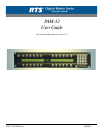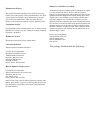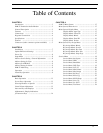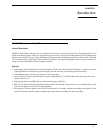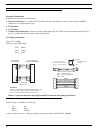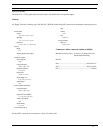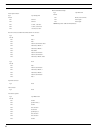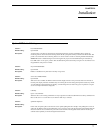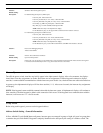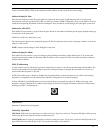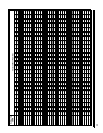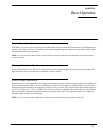
7
CHAPTER 2
Installation
Option DIP Switch Settings
Switch 1: Latch Enable/Disable
Default Setting: Open: Enable
Description: An intercom key can always be turned ON for momentary listening by pressing and holding the key during the
monitoring. There is also an electronic latching feature that lets you tap intercom keys to9 turn them ON or OFF. This
permits convenient hands-free monitoring. However it can also result in a listen circuit being left ON unintentionally.
NOTE: DIP switch 1 disable latching for the entire keypanel. If you just need to disable latching for selected keys,
leave DIP switch 1 in the “open” position. Then, disable latching for the desired keys using the “D” check boxes in the
Keypanels/Ports setup screen in AZedit.
Switch 2: Key Gain Enable/Disable
Default Setting: Open: Enable
Description: Enables or disables the Key Gain item in the Key Assign menu.
Switch 3: Screen Saver Enable/Disable
Default Setting: Open: Enable
Description: With Screen Saver enabled, the PAM-32 will shut off the display and enter a low-power state after a few minutes of
inactivity. The display reactivates instantaneously on incoming call or when the keypanel operator actuates any control.
As with all fluorescent and back lit LCD displays, some dimming will occur after many years of operation. Using the
screen saver helps maximize the display life.
Switch 4: Call Tally
Default Setting: Open: 15 Second Flash
Description Whenever there is an incoming call and there is a key assigned to the caller, the talk LED next to the key will flash. The
flash can be set for a 15 second time-out, or until the caller’s key is released.
Switch 5: Split Panel Operation
Default Setting:
Description: In this mode, the panel replies to the intercom at two separate polling IDS. For example, if the polling ID is set to6, in
split mode, the PAM-32 will respond at IDs6 and 7. Keys on the two sides of the panel operate independently. With this
mode, the audio for the second intercom port could see the AUX IN of the keypanel, and the audio for the two ports
could be routed separately to the left and right headset channels.



